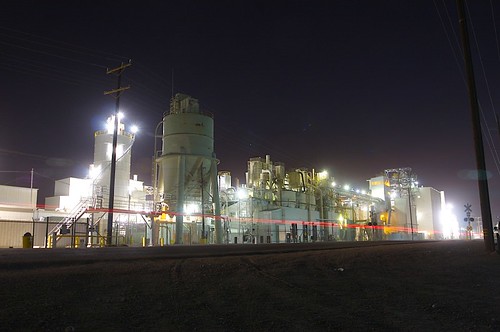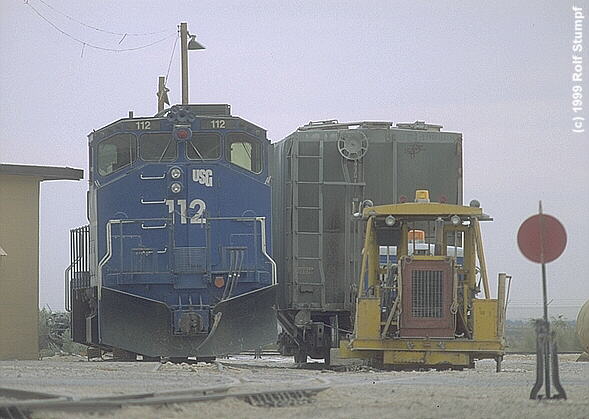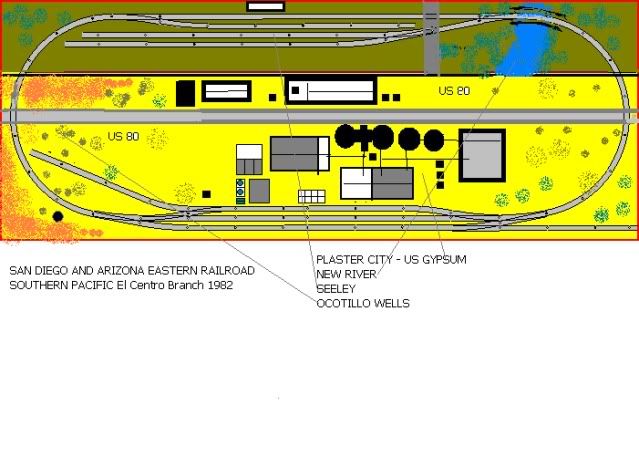Tuesday, November 30, 2010
Climbing on the reefers, not smart...but fun!
Jimmy, Mike and I would goof around by the packing plant and ice house which was just off L street where the tracks crossed. We had so much fun climbing on the reefers. These would have been the first of the PFE Reefers.
Monday, November 29, 2010
Put a coin on the track...
When I would hear the diesel horns of SP SD's and GP's on The San Diego
and Arizona Eastern in 1963/64 on K St. in Chula Vista, CA, I would place
a penny on the tracks and Michael and Jimmy would say the train is going
to derail. Well, it didn't and the smashed coins were fun to collect. Watching those consists as a kid made me a fan of the bloody noses.
and Arizona Eastern in 1963/64 on K St. in Chula Vista, CA, I would place
a penny on the tracks and Michael and Jimmy would say the train is going
to derail. Well, it didn't and the smashed coins were fun to collect. Watching those consists as a kid made me a fan of the bloody noses.
Sunday, November 28, 2010
US Gypsum Plant at Plaster City
Plaster City, CA (US Gypsum Plant) at night off old US Highway 80. (MP 130.0)
US Gypsum Alco road switcher on a siding at the plant.
Looking West on the mainline towards Plaster City,
Tourist services at Plaster City are severely lacking. Where’s the mayor? In fact, there are no services in Plaster City. No gas stations, restaurants, parks, police, or pedestrians for that matter. Plaster City gives you no reason to stop, but plenty reasons to wonder about this strange industrial complex straddling Old US 80 in the far western edge of Imperial Valley.
US Gypsum Alco road switcher on a siding at the plant.
Looking West on the mainline towards Plaster City,
Gypsum mining keeps Plaster City in the money
- September 27th, 2009 7:18 pm PT
Tourist services at Plaster City are severely lacking. Where’s the mayor? In fact, there are no services in Plaster City. No gas stations, restaurants, parks, police, or pedestrians for that matter. Plaster City gives you no reason to stop, but plenty reasons to wonder about this strange industrial complex straddling Old US 80 in the far western edge of Imperial Valley.

If Plaster City looks like an outdoor factory, it’s because that’s exactly what it is. Owned by the U.S. Gypsum Company, the company mines raw gypsum (hydrous calcium sulphate) from the desert for use in everything from wallboard to crayons.
If passing through Plaster City is impressive, it should be. U.S. Gypsum is no slack operation. This is a Fortune 500 company trading on the New York Stock Exchange with shares going for $16.14. Operations extend to every continent and sales in 2008 reached $4.6 billion.
The company may have 12,600 employees, but a weekend pass through Plaster City finds the factory in shut down mode and not a soul in site. The bland white buildings, silver piping, chutes and stairways tower over the hot asphalt highway that leads in one direction – out of town.
Where do they get the gypsum? A three-foot wide narrow-gauge railway runs 25 miles to the north to a place called Fish Creek where ore containing the gypsum is extracted from the earth. It is estimated that the gypsum deposit covers an area of 2-square miles at an average depth of 125 feet.
Once mined, the ore is crushed into gravel and refined in a furnace and turned into a white powder we know as plaster of paris. About 3,000 tons of gypsum is hauled by the train to the factory daily. Back when the tracks were laid in 1924, the locomotives were steam . Today they are diesel.
. Today they are diesel.
 . Today they are diesel.
. Today they are diesel.Railroad tracks run adjacent to the Plaster City plant where the wallboard is manufactured in a building measuring three-quarters of a mile long. Inside, the wet plaster rides on a belt where it gets sandwiched between sheets of paper then heated through a kiln and finally cut to standard sizes. It is then shipped to major cities for distribution.
It’s at Plaster City where the San Diego & Arizona Eastern Railway (The Impossible Railroad) meets the Union Pacific. One flatcar can carry enough wallboard for the interior of 10 modern houses.
Plaster City is isolated from unwanted urban encroachment and miles of open desert separate it from the nearest town. The extensive Colorado Desert region surrounding the town is Bureau of Land Management property and open to off-road vehicle use at no charge.
Old US 80 was the main thoroughfare through the Imperial County until being superceded by Interstate 8 in the early 1970’s. The old highway once crossed the country, but has been reduced to mostly frontage roads in the west.
In Imperial Country, Old US 80 went from a wood plank road to a paved highway. Each improvement was built over the next, except in areas like the one between Plaster City and the town of Ocotillo. On the southern side of the highway, looking more like a sidewalk at 10 feet in width, is an early version of US 80 built for an era long past.


Amazing fast facts on the SD&AE
- 50 miles of the line runs through Baja California with border crossing gates near Tecate and in San Ysidro.
- The Goat Canyon Trestle across Carrizo Gorge is the longest wood train trestle in the world.
- In 1977 Hurricane Kathleen wiped out major portions of the line.
- The line goes through 21 tunnels over 14 trestles in just 11 miles.
- Started by sugar tycoon John D. Spreckles, the line was later sold to The Southern Pacific.
Saturday, November 27, 2010
Welcome to The San Diego and Arizona Eastern RR Blog
My name is Chuck Geiger from Fresno, CA. Since 1964, I have been a fan
of The San Diego and Arizona Eastern Railroad. The little route that could.
Portions of the route from San Diego to El Centro went into Mexico, crossed
the largest wood railway trestle in the world and was run for a while by the
Southern Pacific Railroad.
I was a youngster living in Chula Vista, CA on the mainline of the SD&AE. Packing and ice houses and through freights running SP units of reefers and flats loaded with wallboard from Plaster City, CA (near El Centro) bound for San Diego. Freights leaving San Diego bound for the SP connection in El Centro, which would interchange and run north to Niland to proceed on the SP Yuma District. I have planned an HO and later an N scale version of the line.
FIND OUT MORE: SD&AE WIKIPEDIA
Railroad Timeline
SD&AE 2x4 N Layout from Tom in San Diego (from Trainboard)
Rough sketch of HCD layout 4/09
of The San Diego and Arizona Eastern Railroad. The little route that could.
Portions of the route from San Diego to El Centro went into Mexico, crossed
the largest wood railway trestle in the world and was run for a while by the
Southern Pacific Railroad.
I was a youngster living in Chula Vista, CA on the mainline of the SD&AE. Packing and ice houses and through freights running SP units of reefers and flats loaded with wallboard from Plaster City, CA (near El Centro) bound for San Diego. Freights leaving San Diego bound for the SP connection in El Centro, which would interchange and run north to Niland to proceed on the SP Yuma District. I have planned an HO and later an N scale version of the line.
FIND OUT MORE: SD&AE WIKIPEDIA
Railroad Timeline
| 1873: Population of San Diego 5,000. 1887: Sugar millionaire John D. Spreckles sails to San Diego. 1907: Population of San Diego tops 35,000. Spreckles begins construction of railroad. 1911: Imperial County is created. Mexican Revolution. 1916: Heavy flooding. 1919: First passenger train from El Centro to San Diego. 1920: Avalanche in gorge. 1930: Population of San Diego reaches 148,000. Other Related DesertUSA Resources | 1932: A four-day fire collapses one tunnel, landslide closes another, a third destroyed by fire. 1940: Population of San Diegoreaches 203,000. 1942: U.S. Army patrols railroad for saboteurs. 1951: Last passenger train. 1976: Hurricane Kathleen does heavy damage in Carrizo Gorge. Railroad almost abandons route. 1982: Line closed by storm damage. 1984: Line Closed. 2004: Line reopen They anticipate having work trains passing through the Gorge at any time of the day or night and by the spring 2004, They will have freight trains at the rate of four a day in both directions. Source: BLM |
Planned HCD N Scale layout (designed by David K.Smith)
SD&AE 2x4 N Layout from Tom in San Diego (from Trainboard)
Rough sketch of HCD layout 4/09
HCD final plan from above drawing
HO layout I drew in 2006
Subscribe to:
Posts (Atom)









